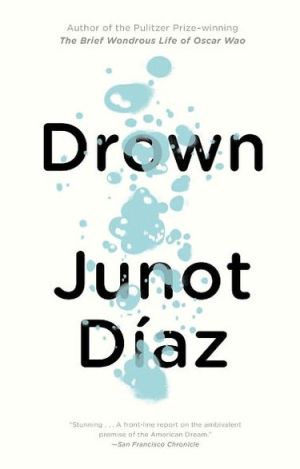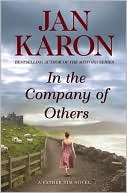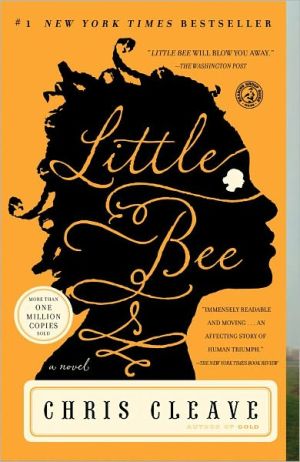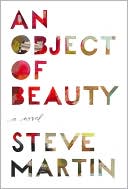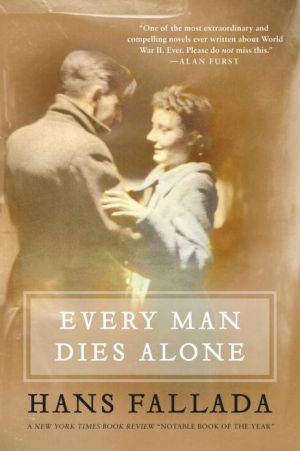Drown
"This stunning collection of stories offers an unsentimental glimpse of life among the immigrants from the Dominican Republic—and other front-line reports on the ambivalent promise of the American dream—by an eloquent and original writer who describes more than physical dislocation in conveying the price that is paid for leaving culture and homeland behind." —San Francisco Chronicle.\ Junot Diaz's stories are as vibrant, tough, unexotic, and beautiful as their settings - Santa Domingo,...
Search in google:
With ten stories that move from the barrios of the Dominican Republic to the struggling urban communities of New Jersey, Junot Diaz makes his remarkable debut. In "Ysrael", two brothers hunt a disfigured boy who hides behind a mask; in "No Face", the mirror is flipped and perspective belongs to the tormented. In "Fiesta, 1980", a spirited family gathering plays against the noiseless hum of a father's infidelities. In "Boyfriend", a young man eavesdrops on the woman next door and colors in the life overheard with the drama born of intense longing. And always, it seems there is the throb of waiting: in "Aguantando", for the fulfillment of a promise; in "Negocios", for rescue; in "Aurora", for respite; in "Drown", for resolution.Robert SpillmanWith recent stories in The New Yorker, The Paris Review and "Best American Stories," Junot Diaz has been hyped as the next young gun of American fiction. With his bare-knuckled prose ("That's the way it is. They built these barrios out of bad luck and you got to get used to that.") and tough, grim settings, Diaz works the same emotional landscape as early Jerzy Kosinski and Thom Jones. And like Jones and Kosinski, Diaz's work mainly consists of thinly veiled autobiography. The 10 stories in "Drown" tell of his impoverished, fatherless youth in the Dominican Republic and his struggle with immigrant life in New Jersey. Diaz has a precise eye for pain, rendering the suffering of the dispossessed with clinical accuracy. In the stories "Ysrael" and "No Face," Diaz tells of a boy whose face has been horribly disfigured by a pig and how he is tormented by the kids of the village. But Diaz also has a wry touch, as in "How to Date a Browngirl, Blackgirl, Whitegirl, or Halfie," where the teenage narrator living in the projects gives a lesson in how to get laid by any kind of girl: "Dinner will be tense... A halfie will tell you that her parents met in the Movement... Your brother once heard that one and said, 'Man, that sounds like a whole lot of Uncle Tomming to me.' Don't repeat this." The last story, "Negocios," points up this collection's one weakness. It is a chronicle of his father's immigration, remarriage and, finally, the rescuing of his children and first wife from their bleak life in the Dominican Republic. While the language, images and characters are well drawn, there's little sense of fiction -- little of the depth and breadth of Kosinski or Jones. These stories don't read like stories, but more like sociology or reportage, like firsthand New Yorker pieces of old. Diaz expertly captures the rage and alienation of the Dominican immigrant experience, but it will be interesting to see what he does if he turns his talent and indignation to true fiction. -- Salon
YsraelFiesta, 1980AuroraAguantandoDrownBoyfriendEdison, New JerseyHow to Date a Browngirl, Blackgirl, Whitegirl, or HalfieNo FaceNegocios
\ Robert SpillmanWith recent stories in The New Yorker, The Paris Review and "Best American Stories," Junot Diaz has been hyped as the next young gun of American fiction. With his bare-knuckled prose ("That's the way it is. They built these barrios out of bad luck and you got to get used to that.") and tough, grim settings, Diaz works the same emotional landscape as early Jerzy Kosinski and Thom Jones. And like Jones and Kosinski, Diaz's work mainly consists of thinly veiled autobiography.\ The 10 stories in "Drown" tell of his impoverished, fatherless youth in the Dominican Republic and his struggle with immigrant life in New Jersey. Diaz has a precise eye for pain, rendering the suffering of the dispossessed with clinical accuracy. In the stories "Ysrael" and "No Face," Diaz tells of a boy whose face has been horribly disfigured by a pig and how he is tormented by the kids of the village. But Diaz also has a wry touch, as in "How to Date a Browngirl, Blackgirl, Whitegirl, or Halfie," where the teenage narrator living in the projects gives a lesson in how to get laid by any kind of girl: "Dinner will be tense... A halfie will tell you that her parents met in the Movement... Your brother once heard that one and said, 'Man, that sounds like a whole lot of Uncle Tomming to me.' Don't repeat this."\ The last story, "Negocios," points up this collection's one weakness. It is a chronicle of his father's immigration, remarriage and, finally, the rescuing of his children and first wife from their bleak life in the Dominican Republic. While the language, images and characters are well drawn, there's little sense of fiction -- little of the depth and breadth of Kosinski or Jones. These stories don't read like stories, but more like sociology or reportage, like firsthand New Yorker pieces of old. Diaz expertly captures the rage and alienation of the Dominican immigrant experience, but it will be interesting to see what he does if he turns his talent and indignation to true fiction. -- Salon\ \ \ \ \ \ Publishers Weekly - Publisher's Weekly\ The 10 tales in this intense debut collection plunge us into the emotional lives of people redefining their American identity. Narrated by adolescent Dominican males living in the struggling communities of the Dominican Republic, New York and New Jersey, these stories chronicle their outwardly cool but inwardly anguished attempts to recreate themselves in the midst of eroding family structures and their own burgeoning sexuality. The best pieces, such as "Aguantando'' (to endure), "Negocios,'' "Edison, NJ'' and the title story, portray young people waiting for transformation, waiting to belong. Their worlds generally consist of absent fathers, silent mothers and friends of questionable principles and morals. Diaz's restrained prose reveals their hopes only by implication. It's a style suited to these characters, who long for love but display little affection toward each other. Still, the author's compassion glides just below the surface, occasionally emerging in poetic passages of controlled lyricism, lending these stories a lasting resonance. BOMC and QPB alternates; foreign rights sold in Holland, Norway, Sweden, the U.K., Spain, France and Germany. (Sept.) FYI: Diaz was the only writer chosen by Newsweek as one of the 10 "New Faces of 1996."\ \ \ Library JournalDiaz has received much pre-publication praise and publicity for this, his first collection, of short stories. Set in his native Dominican Republic or in the Dominican neighborhoods of New Jersey, these stories focus on the carnal aspect of human nature. They graphically depict lives defined by poverty and the cynicism and hardness that can develop from it; the complex nature of relationships, both among peers and within families; and the desperation of those who are enslaved by the American drug culture. Diaz's writing is at times somewhat strained, but he provides convincing portraits of characters attempting to cope with lives which provide them with few advantages and much pain. Recommended for academic libraries.Rebecca Stuhr-Rommereim, Grinnell Coll. Libs., Ia.\ \ \ \ \ Kirkus ReviewsDíaz's first collection of ten stories, some having appeared in the New Yorker and Story, is certain to draw attention for its gritty view of life in the barrios of the Dominican Republic and rough neighborhoods of urban New Jersey.\ Most of the stories are linked by their narrator, who spent his first nine years in the D.R., until his father in the States brought the entire family to South Jersey, where he continued to display the survivalist machismo he developed during years of poverty, scamming, and struggle. In the Caribbean pieces, Díaz offers a boy's-eye view of a hardscrabble life. In "Ysrael," the narrator and his brother, sent to the countryside during the summer, plot to unmask a local oddity, a boy whose face was eaten off by a pig in his youth. Much later in the volume, "No Face" reappears, surviving the taunts of the locals as he waits for his trip to America, where surgeons will work on his face. "Arguantando" documents life in the barrio, where the narrator, his brother, and his mother eke out an existence while hearing nothing from the father. "Negocios" explains why: Robbed of his savings in the US, the father schemes to marry a citizen in order to become one himself, all the time thinking of his family back home. He is hardly a saint, and, reunited in New Jersey, the family is dominated by his violent temper. "Fiesta, 1980" recalls the narrator's bouts of car sickness, for which his father shows no sympathy. In the remaining tales, a teenaged Dominican drug dealer in New Jersey dreams of a normal life with his crackhead girlfriend ("Aurora"); a high-school dealer is disturbed by his best friend's homosexuality ("Drown"); and "How to Date . . ." is a fractured handbook on the subtleties of interracial dating.\ Díaz's spare style and narrative poise make for some disturbing fiction, full of casual violence and indifferent morality. A debut calculated to raise some eyebrows.\ \ \
